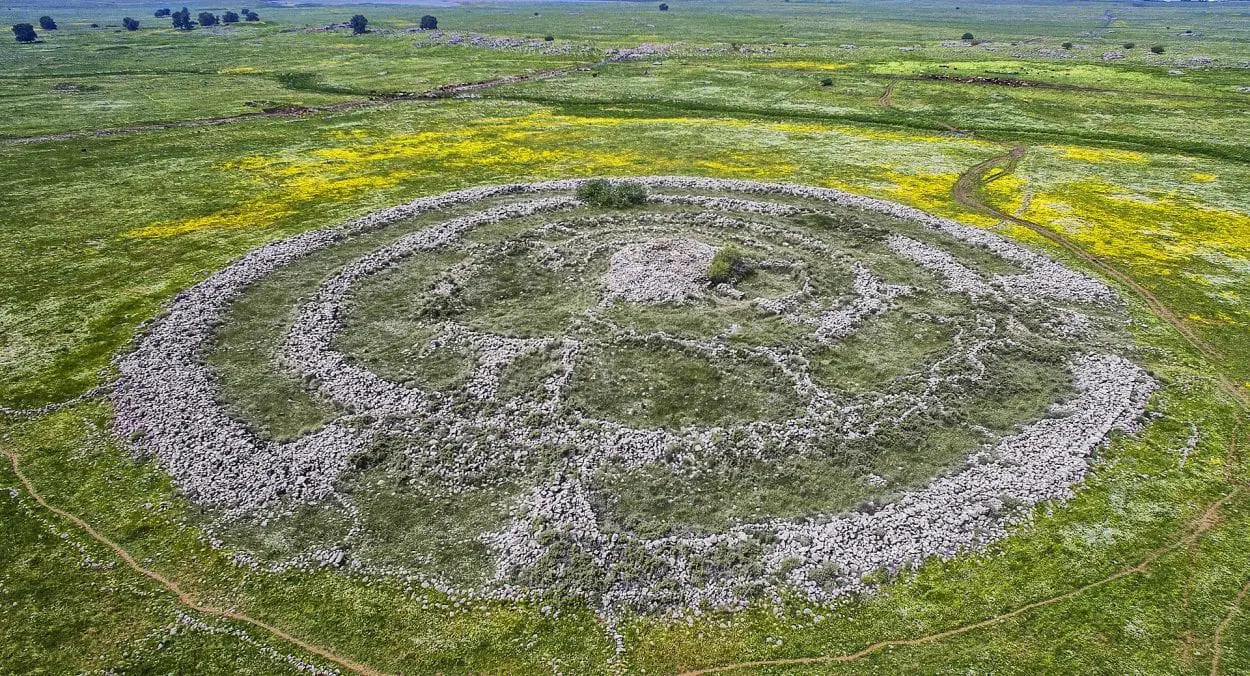Rujm el-Hiri (meaning “”stone heap of the wild cat”), also called Gilgal Refā’īm (meaning “wheel of spirits”), is an ancient megalithic monument, located in the Israeli-occupied region of the Golan Heights.
Archaeologists dating sediment eolian samples, and the study of pottery sherds excavated in situ, suggest it was constructed either during the Early Bronze Age II around 3000 to 2700 BC, or from the Chalcolithic–Early Bronze Age I between 3880– 3540 BC (although there is still no consensus).
Rujm el-Hiri consists of a series of concentric circles that centres on a mound or cairn. The circles used approximately 37,500-40,000 tons of volcanic basalt material, stacked to a height of 2 metres, with a large oval shaped circle containing four progressively thinner rings.
The central mound was added to the moment during the Late Bronze Age around 1550 BC – 1200 and was built from smaller basalt rocks that reach a height of 4.6 metres, concealing a large circular cell (although Michael Freikman of the Hebrew University of Jerusalem suggests that the mound dates from the Chalcolithic period based on the discovery of a small pin in the cell).

The site has two entrances that face the northeast and southeast, with the northeast entrance leading to an accessway into the centre of the circles that points in the general direction of the June solstice sunrise.
The monument sits in a relatively flat plateau, absent of any associated structures or ancient settlements, but in the surrounding landscape are hundreds of monolithic dolmens and evidence of nine Chalcolithic dwellings.
Archaeologists speculate as to the monuments function, with theories ranging from the suggestion that Rujm el-Hiri was used like the Dakhmas of the Zoroastrians, for astronomical observations of the constellations, a burial site (although no human remains have been found), an ancient calendar, or a religious centre for conducting passage rites in which the recently deceased journeyed to the netherworld.
Header Image Credit : ZeevStein – CC BY-SA 4.0







